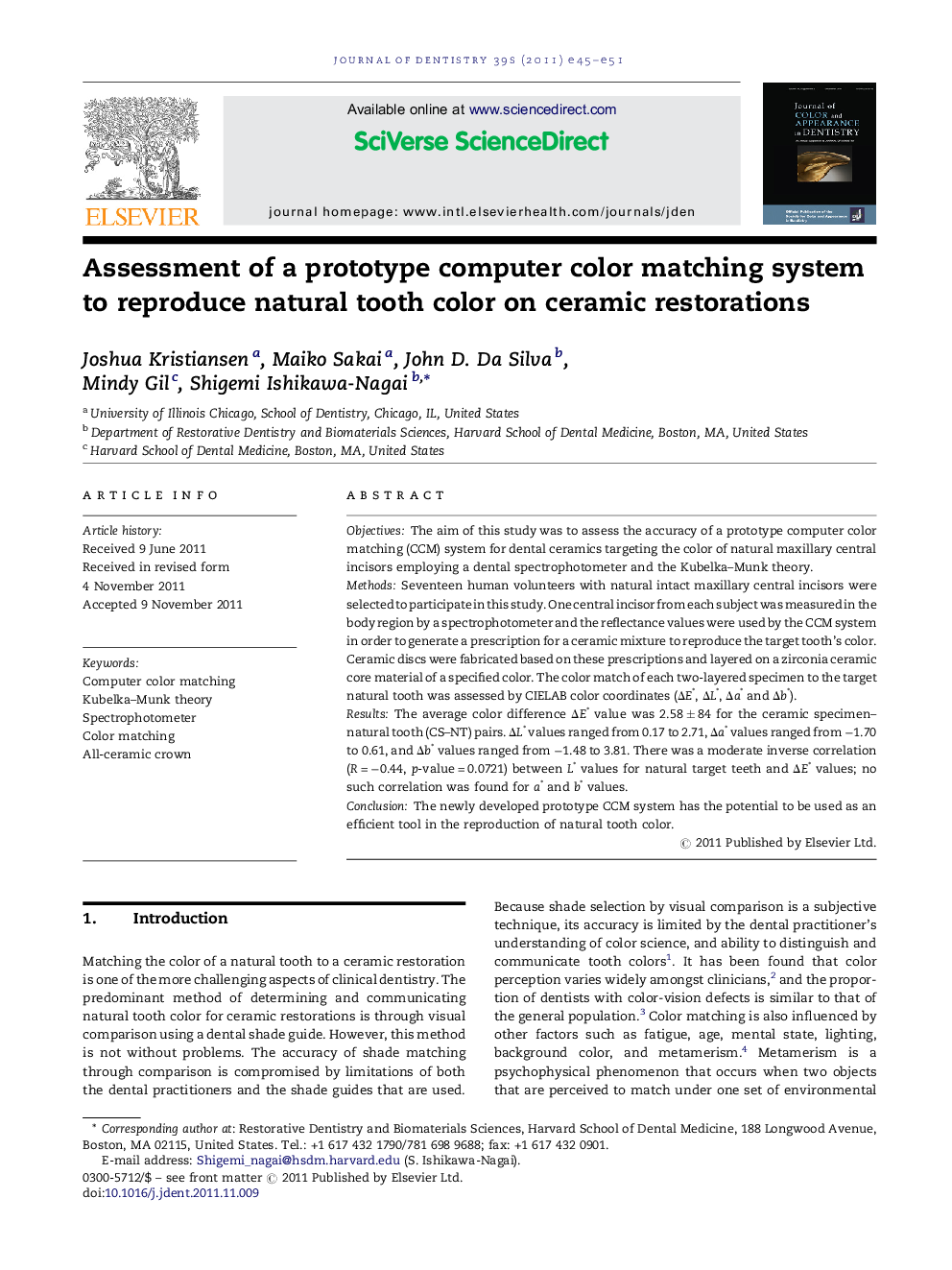| Article ID | Journal | Published Year | Pages | File Type |
|---|---|---|---|---|
| 6053898 | Journal of Dentistry | 2011 | 7 Pages |
ObjectivesThe aim of this study was to assess the accuracy of a prototype computer colour matching (CCM) system for dental ceramics targeting the colour of natural maxillary central incisors employing a dental spectrophotometer and the Kubelka-Munk theory.MethodsSeventeen human volunteers with natural intact maxillary central incisors were selected to participate in this study. One central incisor from each subject was measured in the body region by a spectrophotometer and the reflectance values were used by the CCM system in order to generate a prescription for a ceramic mixture to reproduce the target tooth's colour. Ceramic discs were fabricated based on these prescriptions and layered on a zirconia ceramic core material of a specified colour. The colour match of each two-layered specimen to the target natural tooth was assessed by CIELAB colour coordinates (ÎE*, ÎL*, Îa* and Îb*).ResultsThe average colour difference ÎE* value was 2.58 ± 84 for the ceramic specimen-natural tooth (CS-NT) pairs. ÎL* values ranged from 0.17 to 2.71, Îa* values ranged from â1.70 to 0.61, and Îb* values ranged from â1.48 to 3.81. There was a moderate inverse correlation (R = â0.44, p-value = 0.0721) between L* values for natural target teeth and ÎE* values; no such correlation was found for a* and b* values.ConclusionThe newly developed prototype CCM system has the potential to be used as an efficient tool in the reproduction of natural tooth colour.
